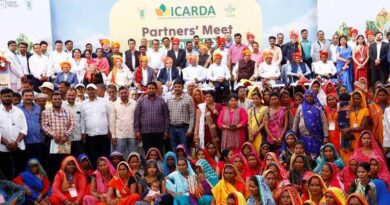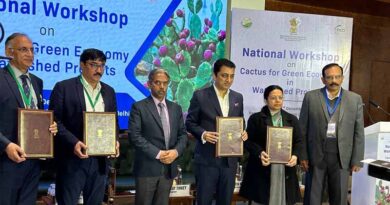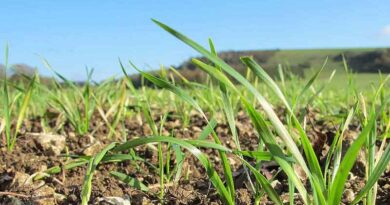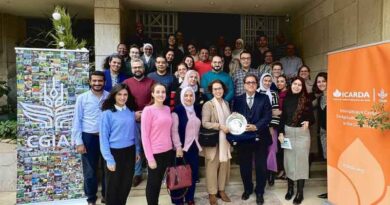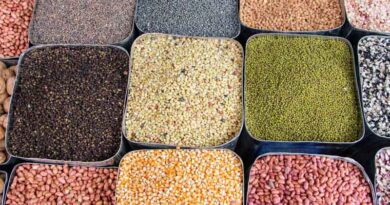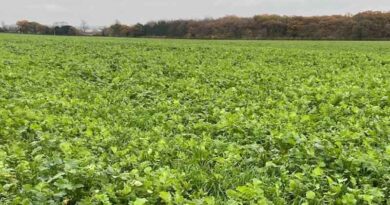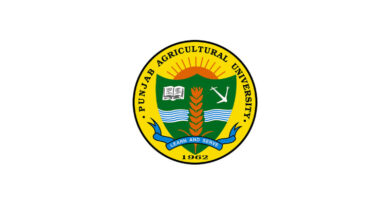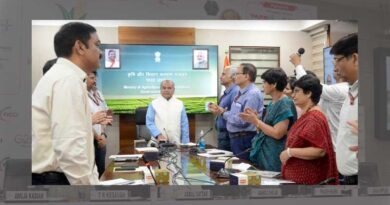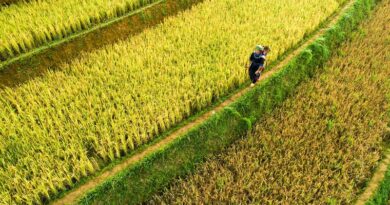Addressing India’s Pulse Production Challenges: Insights from ICARDA and the Roadmap Ahead
Interview with Dr. Shiv Kumar Agrawal, Head of the Food Legume Research Platform (FLRP) of ICARDA and Regional Coordinator of the ICARDA South Asia and China Regional Program with Nimish Gangrade, Editor, Global Agriculture. (The article was originally published in Global Agriculture)

01 July 2024, New Delhi: Despite being the largest producer, consumer and importer of pulses in the world, India faces challenges in meeting its domestic demand. Pulses, which account for 23 percent of the agricultural area, contribute only 10 percent to the overall foodgrain production in the country. As a result, India imports a significant portion approximately 14 percent (2.9 million tonnes in 2023) of the global pulse production to bridge the supply-demand gap. This highlights the need for strategic measures to enhance domestic production and reduce reliance on imports despite India’s substantial share of 25 percent in global pulse production.
The International Center for Agricultural Research in the Dry Areas (ICARDA) works closely with the Indian Council of Agricultural Research (ICAR) and other Indian partners. Their work in India focuses on pulses technologies. We spoke to Dr. Shiv Kumar Agrawal, India Country Manager as well as Head of the Food Legume Research Platform (FLRP) of ICARDA and Regional Coordinator of the ICARDA South Asia and China Regional Program, to understand ICARDA’s ongoing work on pulses and the roadmap for India to improve the production and productivity of the crop.

Q1. Why is ICARDA working on pulses?
Given the global wheat crisis, pulses are the silent superheroes when it comes to sustainable agriculture and food security under climate change. We are promoting climate-smart pulse crops such as lentils, kabuli chickpea, faba bean and grass pea (for which we have the global mandate) because they are not only high in protein and enrich the soil with essential nutrients, but they also help smallholder communities in dry areas to increase their yields, become more food-secure and to improve their livelihoods. Pulses, specifically lentils, can adapt seamlessly to challenging conditions such as climate-related droughts, heat waves, water scarcity etc.
For this reason, ICARDA India not only has its country office in New Delhi but is also running a Food Legume Research Platform at Amlaha near Bhopal which aims to serve India and the region by generating and deploying innovations for pulse-based production systems to reduce dependencies on imports. For nearly a decade, we have successfully identified improved pulse crop varieties and management practices and are promoting those in cooperation with our partners, such as the Indian Council for Agricultural Research and state agricultural universities, in many Indian states through our projects. The focus of our work in India is on upscaling proven technologies to improve yields, and farmer incomes and to reduce import dependencies. We work closely with smallholder farmer organizations, i.e. in the Odisha Irrigated Agriculture Project where we successfully introduced improved pulse crop varieties.
Q2. What are some of the global benchmarks for productivity in pulses?
Different pulse crops have varying global benchmarks for productivity. China, for instance, sets the standard with average yields of 5.5 t/ha for chickpea and 2.5 t/ha for lentil, compared to India’s 1.3 t/ha and 0.8 t/ha, respectively. Canada, Australia, and Ethiopia achieve national average yields of lentil ranging from 1.5 to 1.7 t/ha.
Q3. Should India look at GM pulses for improving productivity?
I believe certain yield constraints faced by pulse crops lack solutions through conventional means. For instance, pod borer infestation leads to significant losses in chickpea production, with no germplasm currently possessing resistance or tolerance to this pest. With novel tools like gene editing using Casper/Cas9 technique, resistant chickpea varieties can be developed, which aligns with the acceptance of the Government of India. On a more general note, ICARDA is committed to developing products that are safe for humans, animals and the environment. We are not only obligated to follow national policies, laws and regulations on access and benefit-sharing when accessing and using genetic resources and their associated traditional knowledge but also to comply with the CGIAR Ethics Research Code which aims to conduct all operations to the highest ethical standards.
Q4. What are the challenges and concerns for low pulse crop productivity in India?
The primary challenges for low pulse productivity in India include the untimely availability of quality seeds of improved varieties and a lack of appropriate production technologies. These crops, rich in protein, face numerous diseases and insect pests, resulting in significant losses and unstable productivity. Weeds alone contribute to 20-30% yield losses in pulse crops. While about two-thirds of the cultivated land in India depends on rainfalls, there is also an expansion of irrigated agriculture in India. The fact that cereals benefit from subsidies on irrigation, fertilizer, electricity, and assured procurement is an incentive for pulse farmers to shift towards cultivating rice and wheat to take advantage of such subsidies.
However, ICARDA’s large-scale on-farm demonstrations have demonstrated that improved varieties and good agronomic practices can increase pulse yields by at least 30 to 40%.
Q5. How must India address its low pulse crop productivity?
To achieve global benchmarks in pulse productivity, India should focus on increasing variety and seed replacements through quality seed production, adopting good agronomic practices (such as conservational tillage (zero tillage), effective resource management, crop diversification and intensification, integrated pest management (IPM) and soil health management), and implementing effective pre and post-harvest management techniques.
Luckily, India has made significant progress in pulses production, increasing from 14 to 28 million tonnes in the past decade, a substantial leap by any measure. However, there are still significant yield gaps that can be addressed through the development of improved varieties, enhanced crop and pest management practices, and the establishment of better market linkages supported by conducive policies.
Q6. What are some of the relevant case studies and trials that can have a positive impact on pulse productivity?
Recent studies have shown that short-duration varieties of lentil, grasspea, chickpea, pea and mung bean can be grown profitably in rice fallows. By cultivating these crops, not only can pulse productivity be increased, but it also contributes to diversifying rice-wheat, rice-rice, and rice-maize systems, positively impacting crop, water, and land productivity.
Introducing pulse crops into cereal-based cropping systems brings forth several positive impacts on ecosystems which include atmospheric nitrogen fixation, low water and carbon footprints, disruption of disease cycles, and improved soil health. It is important to emphasize these beneficial effects when considering the integration of pulse crops in cereal-based cropping systems. Yield gap studies have revealed that implementing good agronomic practices, such as timely planting, integrated crop and pest management, and effective water and nutrient management, can help bridge the yield gaps in pulse production.
Furthermore, considering the impact of climate change, including more frequent and intense droughts, waterlogging, and heat stresses, the adoption of climate-smart pulse crop varieties enriched with micronutrients can mitigate the adverse effects and enhance pulse productivity. Additionally, the development of machine-harvestable pulse varieties, coupled with efficient irrigation methods, can contribute to scaling up commercial pulse cultivation.
(For Latest Agriculture News & Updates, follow Krishak Jagat on Google News)
(+80 Million Farming Audience Visits Krishak Jagat’s Hindi Website – Click Here for Website)


